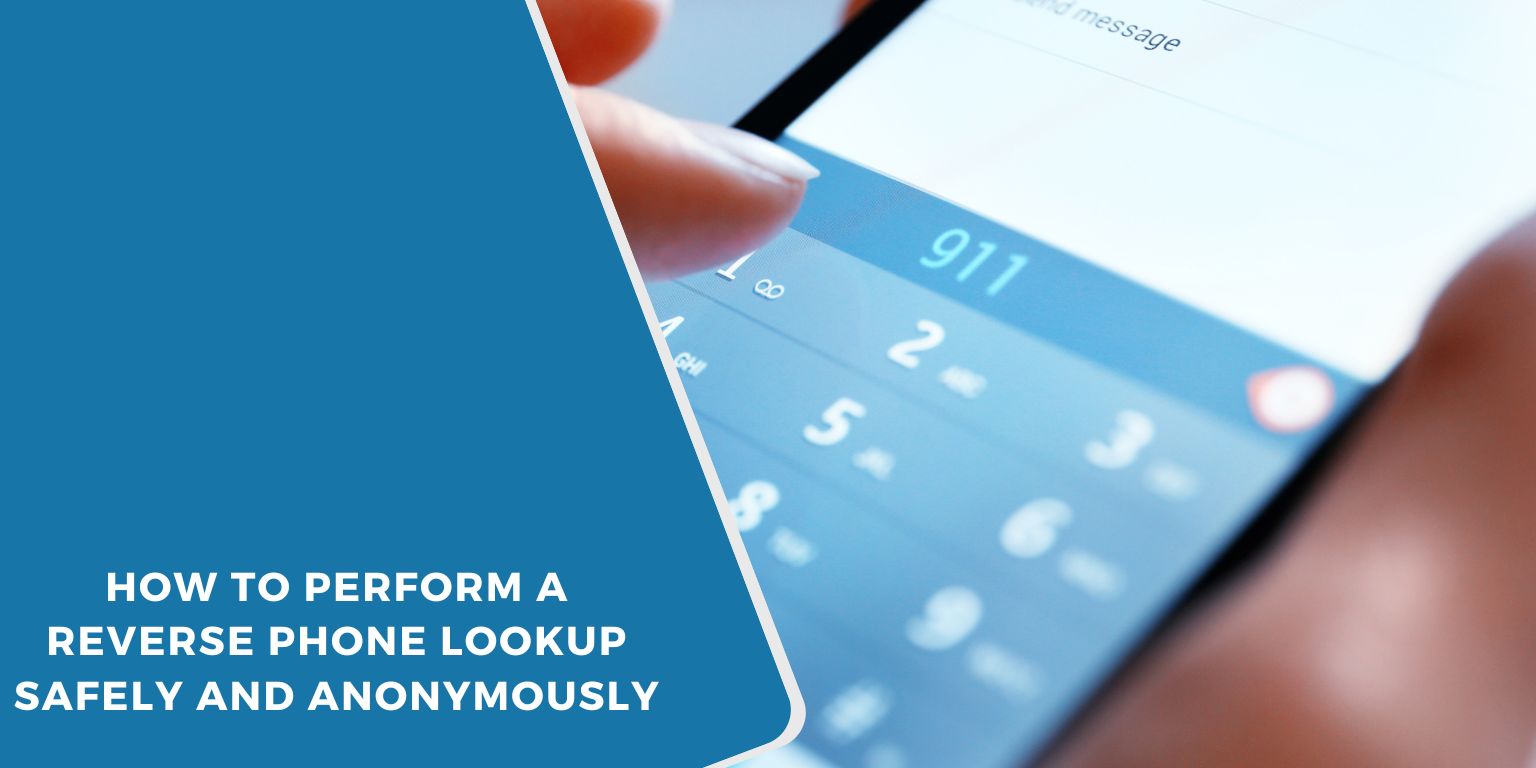You get a missed call or strange text. It’s from a number you don’t know. Before calling back, you want to check who it is. However, most reverse phone lookup tools require your name, email address, or even credit card information. That feels like too much.
Luckily, you don’t have to give up any personal info. You can find out who’s calling — safely, and for free — with the right tools and steps.
What Is Reverse Phone Lookup?
A reverse phone lookup is a process of searching for information using only a phone number. Instead of starting with a name, you start with the number to see who’s behind it. This can show a name, city, phone type (mobile or landline), or business name.
It works best with listed landlines and business numbers. Mobile numbers and VoIP numbers (from services like Google Voice or WhatsApp) may not always appear in public records. Still, many websites can give hints or partial info, especially for reported spam or telemarketer calls.
Why Most Free Tools Want Your Info
Most sites that offer “free” phone lookups aren’t free. They often ask you to enter your name, email, or other details before showing you anything helpful. Others may offer a teaser result but then prompt you to upgrade to a paid plan.
Here’s how many of these sites work:
- They collect your data for marketing or resale
- They make money by offering fake “free trials.”
- Some hide charges in small print
- Many show fake warnings or “urgent” messages to get you to pay
They may also retain the number you searched, link it to your IP address, or use cookies to track your browsing activity. That’s not safe if you’re trying to stay anonymous.
Best Free Ways to Do a Lookup Without Signing Up
 Here are fundamental, no-login tools and tricks to look up numbers without giving anything away:1. Google Search
Here are fundamental, no-login tools and tricks to look up numbers without giving anything away:1. Google Search
Still the fastest and easiest method. Just type the full number in quotes — like “555-123-4567” — and hit search. If that number appears on public websites, business listings, complaint boards, or social media, it may appear in the results. Add words like scam, who called, or spam to narrow the results.
It’s not perfect — newer numbers or unlisted ones won’t show up. But when it works, it works fast. You don’t need to install anything, give your number, or even click past page one in most cases. This is usually the best starting point.
2. TrueCaller (Web View)
TrueCaller? A well-known app that also offers a web-based lookup for phone numbers. Just go to the site, paste in the number, and you’ll often see some basic info: a name, whether it’s marked as spam, and maybe even a location.
Now, here’s the catch — full details, such as email or photo, usually require logging in. And yes, it pulls data from users’ phonebooks, so it’s not always 100% accurate. But even without signing in, you’ll often get just enough to decide if the number is safe or shady.
For basic users who want quick ID without exposing their own info, this is one of the better free tools.
3. Spy Dialer
Spy Dialer does things differently. Instead of just showing you data, it lets you hear the voicemail greeting (if available). That means you can sometimes hear the caller’s real name, especially if it’s been recorded as part of their voicemail.
It pulls data from public records and doesn’t need a login or personal info: no sign-up walls, no paywalls for basic lookups. Just paste in the number and go.
Now, it won’t always work — many carriers block this type of lookup, and mobile numbers are often kept private. But when it works, it’s surprisingly helpful. Especially for identifying someone who didn’t leave a message but their voicemail did.
4. WhoCallsMe
This one’s more of a message board-style tool than a search engine. You look up a number, and instead of a clean profile, you get real user reports. People post what they experienced: robocalls, debt collection, IRS scams, telemarketers — or just confusion.
That’s what makes it powerful. If someone else got the same call and already explained it, you skip the guesswork. Some reports are detailed and even humorous. Others just say, “Don’t answer.” It’s a public space, so content varies.
It won’t help much with private or new numbers. However, if the number has been bothering many people, it’s likely here.
5. CNAM Lookup Tools
CNAM stands for Caller Name — it’s the tech behind caller ID names you see when someone calls. CNAM lookup tools allow you to check which name is associated with a number without needing a phone call.
They’re often free, and most don’t require login. The info’s basic: you’ll usually get something like “Wireless Caller,” “Business Line,” or a first name. But that might be all you need to verify whether a number feels safe or sketchy.
They’re great for checking numbers that call a lot but never leave a message. No personal info is needed to use them, and they don’t trigger alerts to the number’s owner.
These lookups won’t give you a complete profile — but they help rule out spam, businesses, or spoofed calls.
6. Search Area Code and Prefix
When you can’t find information about the full number, examine the area code and the first 3 digits (the prefix). These indicate where the number is likely to be from. For example:
- 213 is Los Angeles
- 646 is Manhattan
- 888 is toll-free (often business or scam)
It may sound basic, but scammers often use local-looking numbers to deceive people. If the area code matches your city, it feels familiar — even if it’s fake. Searching for the area code and prefix together (like “646-555”) can indicate if others have reported it as part of a spoofing scam.
This trick won’t reveal who owns the number, but it’s a quick way to determine if a number appears legitimate, random, or potentially associated with something suspicious.
Tips to Stay Anonymous While Searching
To stay private, be cautious with how you search. Some lookup tools track your IP, browser type, or even your actions on the page.
Use these steps to protect yourself:
- Use incognito or private mode in your browser
- Don’t enter your own phone number or email address
- Skip sites that ask to “sign in to see results”
- Avoid any site asking for a credit card, even for “free” trials
- Use browsers with built-in tracker blockers (like Brave, Firefox, or DuckDuckGo)
These small steps keep your activity off the radar and reduce the risk of spam later.
What Info Can You Expect to Find?
Free lookups give only limited details, but often enough to decide if a number is worth calling back or blocking.
You might find:
- The caller’s first name or business name
- The city or state tied to the number
- Whether it’s a landline, mobile, or VoIP
- User reports saying it’s a scam, robocall, or telemarketer
You won’t get full addresses, emails, or full identities. That data is locked behind paywalls or simply not public. And that’s a good thing — it protects everyone’s privacy.
What Not to Do (And Why It’s Risky)
Some lookup sites are risky. They look helpful but are more interested in your info than giving real answers.
Avoid these:
- Sites that ask for a credit card to “unlock” free results
- Downloading unknown apps just to search one number
- Giving your email or phone to access search results
- Believing every result — scammers fake names or spoof legit numbers
- Calling the number back without knowing who it is
Many fake lookup tools are made just to gather data, push malware, or upsell expensive services you don’t need.
Final Tip: Lookup Safely, Stay Private
You don’t need to give up anything just to find out who’s calling. Stick to trusted tools, use private browsing, and never give your details to lookup sites that feel shady. If the number keeps calling or feels unsafe, just block it.
Sometimes, not replying at all is the safest course of action.


